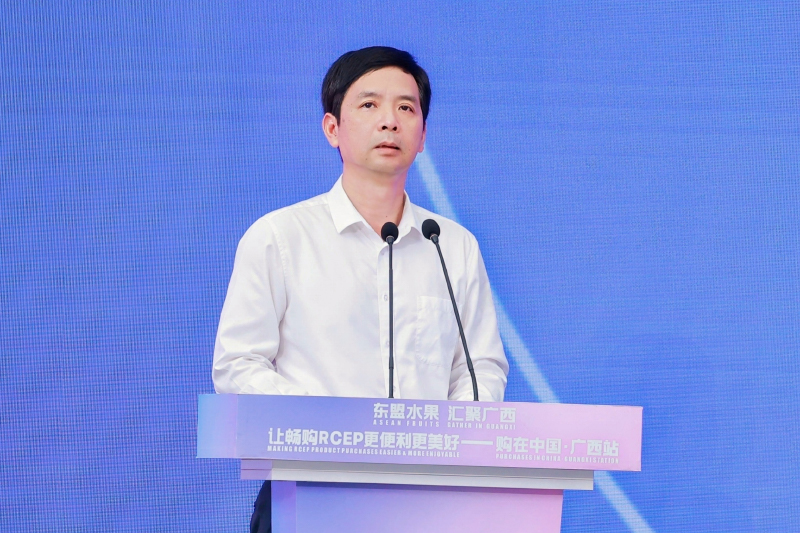




- BRNN
- BRI News
- BRNN News
- Database
Official Documents Polices and Regulations
Inter-government Documents International Cooperation BRI Countries
Business Guide Economic Data BRI Data
Trade
Investment Projects Latest projects
Cases - Content Pool
A major campaign promoting fruits from members of the Association of Southeast Asian Nations (ASEAN) was launched June 18, 2025, in Nanning, the capital of south China's Guangxi Zhuang Autonomous Region.
At the launch ceremony, Li Shuo, deputy director of the Department of Commerce of Guangxi Zhuang Autonomous Region, gave a detailed presentation on customs clearance facilitation measures at Guangxi's ports. He highlighted Guangxi's unique status as the only provincial-level region in China connected to ASEAN by both land and sea.

Li Shuo, deputy director of the Department of Commerce of south China's Guangxi Zhuang Autonomous Region, introduces customs clearance facilitation measures at the region's ports during the launch ceremony of a major campaign promoting fruits from ASEAN members in Nanning, the capital of south China's Guangxi Zhuang Autonomous Region, June 18, 2025. (Photo courtesy of the event organizer)
Li said Guangxi offers significant port advantages, with efficient and convenient procedures designed to meet the fast customs clearance needs of ASEAN fruits and premium goods from member countries of the Regional Comprehensive Economic Partnership (RCEP). Guangxi's port system boasts three major strengths: a wide range of options, rapid customs clearance and high-quality service.
Guangxi operates 22 ports, ranking fourth nationally by number, and has 12 designated supervision facilities for imported fruits — more than any other provincial-level region in China. Among them, Youyi Pass, also known as Friendship Pass, is one of the country's largest land ports for imported fruits, serving as a major gateway for durians, mangosteens, jackfruits and other ASEAN fruits entering China. Notably, seven out of every 10 durians imported into China enter through this port.
The region has established specialized service windows for imported fruits at its ports, offering green channels for agricultural and sideline products, prioritizing customs clearance for fruits and aiming to complete the process within six hours.
Additional measures include efforts to minimize detention times for fruit at ports and the implementation of a 24/7 appointment-based customs clearance system to ensure freshness.
Guangxi is also developing a China-ASEAN port inspection and quarantine mechanism to further enhance fruit inspection capabilities.
The region has adopted paperless customs clearance processes for fruit imports and is accelerating the construction of smart ports along the China-Vietnam border to streamline procedures for ASEAN fruits.

Tel:86-10-65363107, 86-10-65368220, 86-10-65363106